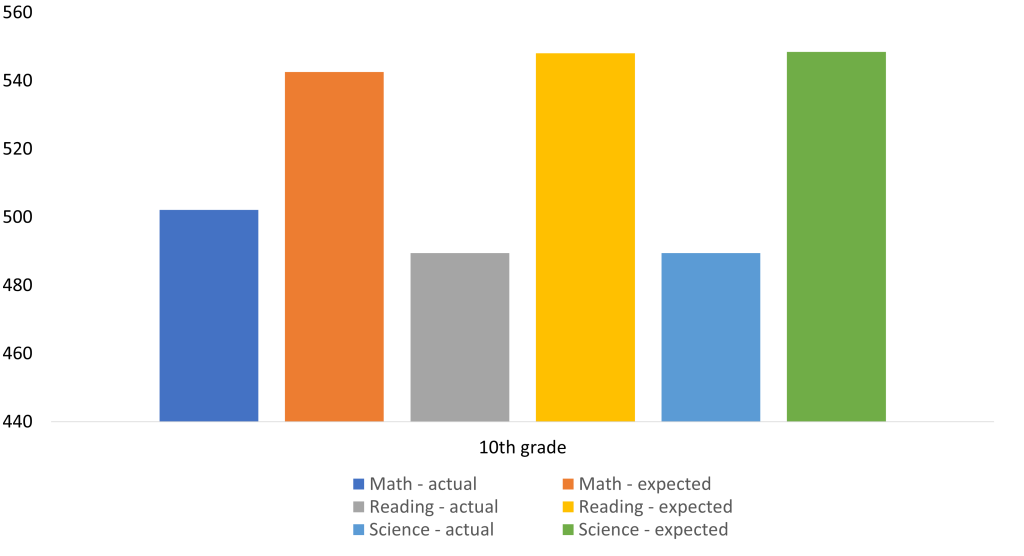 Even Poland, a high-income country and a human capital success story, has not escaped the impacts of Covid on education and has experienced significant learning loss. Photo: Shutterstock
Even Poland, a high-income country and a human capital success story, has not escaped the impacts of Covid on education and has experienced significant learning loss. Photo: Shutterstock
A study from Poland shows that 26 weeks of school closures led to learning loss equal to more than one academic year.
Today is the International Day of Education. It is a time to celebrate our achievements but also to remember to prioritize education. It is especially important this year.
Learning loss among the world’s school children has been one of the mass casualties of COVID-19. Pandemic-induced lockdown measures, which included school closures in most countries, forced 1.4 billion children out of school. By the end of 2021, school closures resulted in more than 200 lost school days, translating into one-and-a-half academic years. Being out of school for that long is a one-two punch – children stop learning and forget much of what they have already learned. As with most crises, the poorest in developing countries feel the most severe impacts of learning loss.
However, even Poland, a high-income country and a human capital success story, has not escaped the impacts of Covid on education and has experienced significant learning loss. Our new paper, Capturing the Educational and Economic Impacts of School Closures in Poland, studies the effects of school closures on secondary school students' math, science, and reading skills. We find that learning loss in Poland was equal to more than one academic year, even though school closures lasted less than a school year (26 weeks).
Our study used an assessment of students that reports results on a scale comparable to the OECD's PISA international study. The results are based on a representative random sample of students in 2021 from grades 10 to 12 and compared to PISA results for a random sample of students from Warsaw between 2003 and 2018.
To properly estimate the effect of school closures and to distinguish it from the effect of the 2016 structural changes—which shortened the period of academic education—we compare the expected and actual achievement of three cohorts of students in secondary schools. It is assumed students should gain a minimum of 0.1 standard deviation (SD) during one year of education.
But our study finds a significant achievement decline in math, reading and science among 10th grade students. The actual results are lower by about 0.4 SD in mathematics and almost 0.6 SD in reading and science. For the 11th grade, mathematics and reading results are lower by approximately 0.3 SD, and in science, by almost 0.4 SD. For the 12th grade, the smallest gap is around 0.2 SD, which is not statistically different from zero (Figure 1).
Figure 1: The actual and expected achievement of secondary school students in Warsaw

Source: Capturing the Educational and Economic Impacts of School Closures in Poland, World Bank, 2022
We separated the effects of the pandemic from the 2016 structural reform by comparing achievement changes in the cohorts affected by both events (10th and 11th grade) to changes in the 12th grade affected by the pandemic only.
The learning losses due to the pandemic are 0.3 SD in mathematics and science and are greater than those caused by structural changes (0.2 SD). In reading, the learning loss is smaller, at 0.2 SD. This is because students forego learning that would have occurred in a typical year, and they forget what they learned from previous years.
The learning loss consequences can be assessed both by looking at macroeconomic outcomes and individual-level productivity reflected in wages. Taking a lower bound estimate of the learning loss, the loss of 0.2 SD in achievement would translate into -0.35 percentage points in GDP growth. A more realistic 0.3 SD learning loss would translate into the effect of -0.52 percentage points on GDP growth.
We also estimated the future earnings losses of today’s students. After 26 weeks of school closures, the yearly economic loss at the individual level would be $653 (2,927 Polish zloty). The present value for the 45 years of working life amounts to a loss of $17,000 for each student. The cumulative loss of lifetime earnings of Polish students amounts to $40 billion, equal to 7.2 percent of 2021 national GDP.
The Polish success story of rapid social and economic progress relied strongly on human capital improvement. But our findings show that this factor is now weakened because of learning loss. In mathematics and science, the learning losses are equal to more than a year's worth of schooling, even though schools were closed for only part of an academic year. In addition, the 2016 reforms had a negative impact on student learning. These losses are likely to affect the future economic success of the students and the country as a whole.
Schools have reopened, and students are back in class. The task of learning recovery must commence quickly to both recover some of the losses and accelerate learning. Accelerated programs must include tailored responses, such as tutoring, for those students that fell behind the most. Teachers also need to be supported to address the challenge with additional resources, and education systems need to be made more resilient to face future shocks.




Join the Conversation